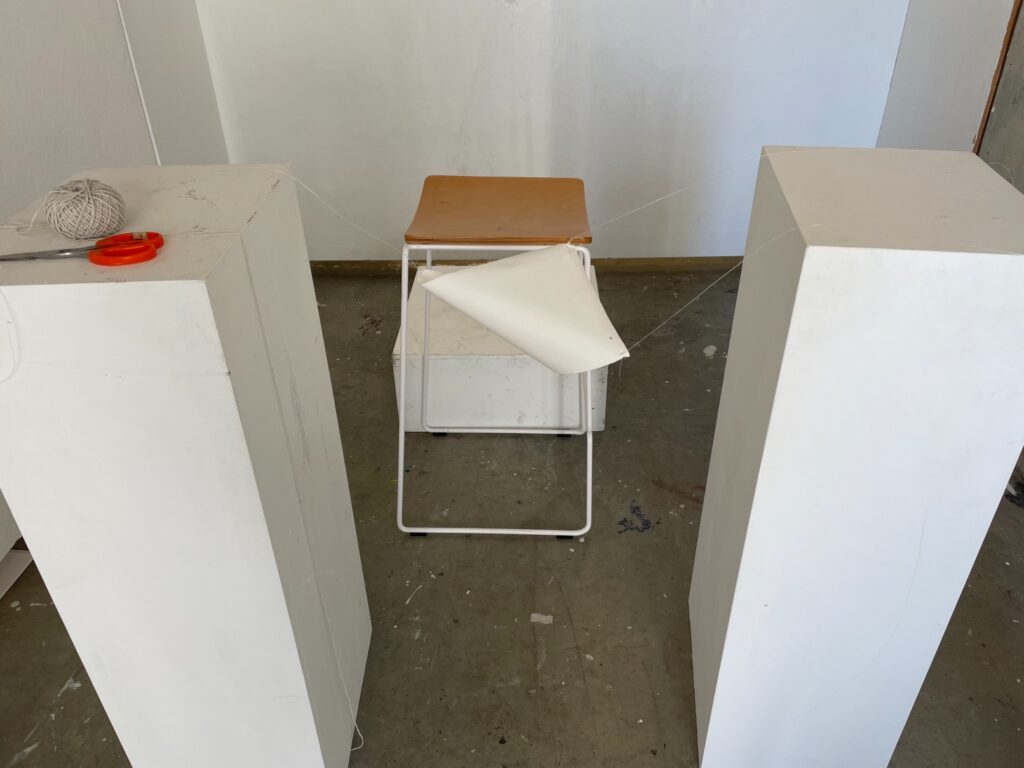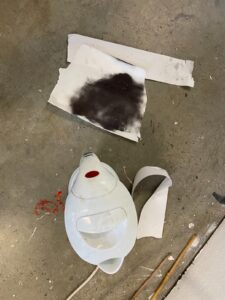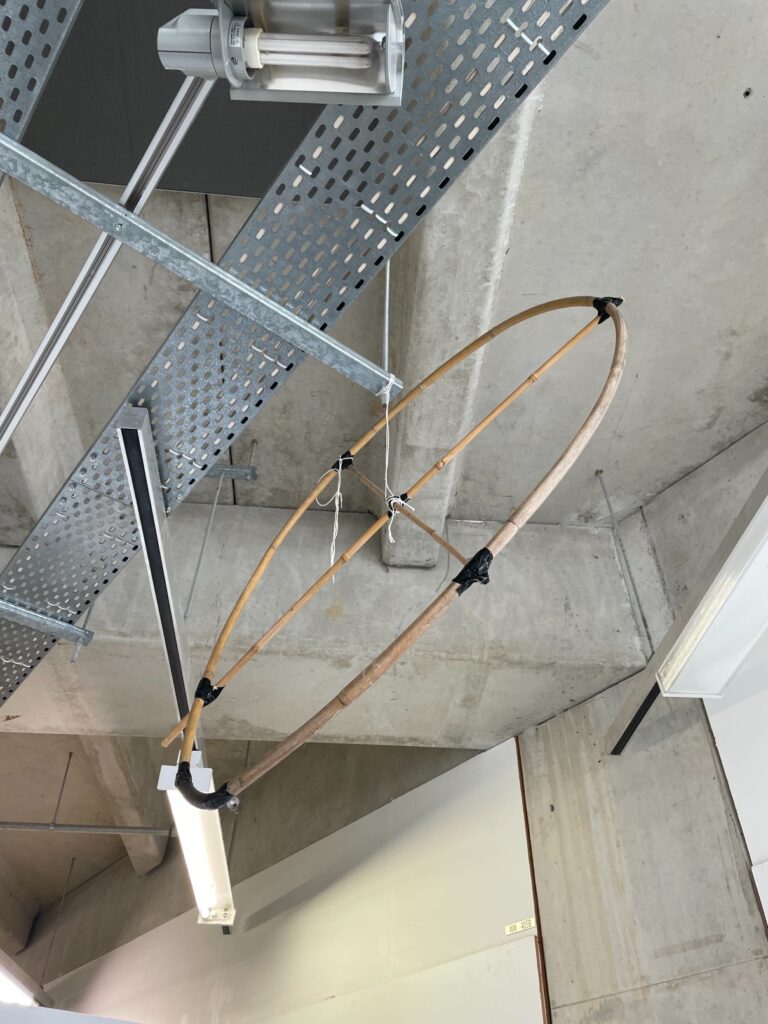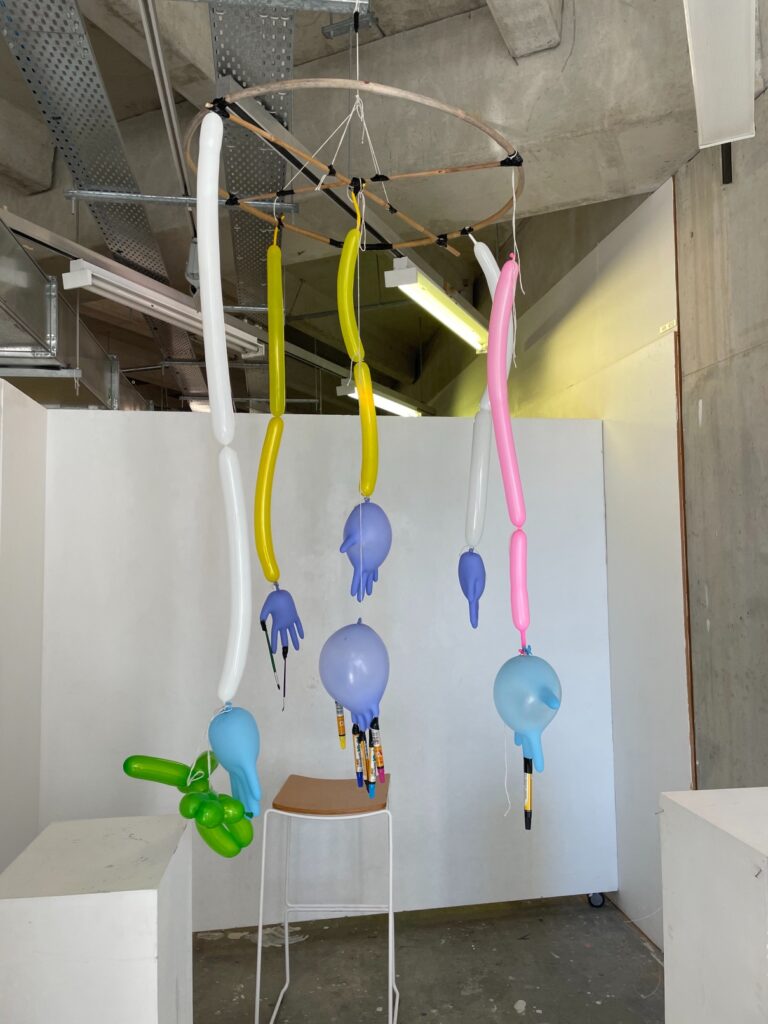On our second day of the art machine brief, we starting by going ahead with testing out our ideas.
Testing

First was if the thermal paper acquired would react to the steam’s heat and discolour. So using a kettle, we boiled the water and held the thermal a slightly above. This caused an instant reaction, and the white sheet darkened. A great outcome, however if we were wanting to draw out the process the height of the paper would have to be altered. At first we placed plinths to the side of the cooking pot, and hung a sheet of thermal paper above. Yet, the paper was too small for the markers to reach. There would have to be a lot of momentum for the gloves to reach the paper. Instead it was suggested that we use clamps on the walls a drape the paper along just below the machine. An idea that will be tested in later experiments.

Making

With a successful outcome, next would be the creation of our glove chandelier. Our first idea was to have the inflated gloves dangle from string attached to a wooden hoop. The hope was for the gloves to swing around as the hoop spun. As they swung about the markers (taped to the fingertips), would cast marks on top of the thermal paper. One problem that came from the markers were the levels. The markers attached to the thumb and pinky, struggled to make any marks. So next time we would need to work on levelling the markers.
After Dieneke’s talk, she mentioned incorporating extension of the body with the gloves. Instead of the hands by themselves, extend the inflated glove with a makeshift arm. To extend from the hand we made use of long balloons as arms. Supplied by Ian, the balloon arms were bright and colourful, giving the machine a comical and playful aspect. By twisting the balloons, we replicated the joint of an elbow, so when swinging the form would take on a human form.

What’s next is to find a motor which can support the spin of the machine. This will make the arms move sporadically and give more to the humour of our machine.
